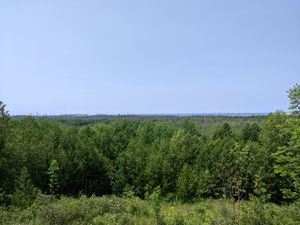In her forthcoming book, Deb Chachra refers to impressive infrastructure sites like Dinorwig Power Station, a massive pumped hydro facility in Wales, as “charismatic megastructures.” In the same way charismatic megafauna like pandas and polar bears galvanize public attention around the ecosystems they exist within, charismatic megastructures are a gateway to understanding infrastructural systems. As someone who spends inadvisable amounts of time driving out to visit infrastructure sites, I appreciated finding an appropriate term for these places.
In July I headed out to the Bruce Nuclear Generating Station, a plant that produces about 30% of Ontario’s electricity, expecting to be awed by the grandeur of another charismatic megastructure. I was not. Which is not to say that the guts of the sprawling plant are unimpressive, just that the tour didn’t offer a close up view of operations. Instead, we spent an hour peering out the windows of a sweltering school bus at blocky buildings and concrete.
I would have liked to come home with some stunning photos that I could point to and tell a simple story about how the reactors work. The Bruce has a CANDU reactor, which has a dorky Canadian name rivaled only by the Canadarm. While I understand why they don’t want members of the public waltzing right up to a nuclear reactor, it would have been nice to come face to face with some charismatic piece of the plant that could anchor a narrative. But the more I think about it, that wouldn’t be the right approach anyway. Atomic energy isn’t simple, and the more I learn about it reveals how much I don’t know. The scope of all things nuclear is dizzying, and the role of nuclear energy in decarbonization is complex and contentious. So, dear reader, I invite you to share your knowledge with me: Please send book recommendations, articles, opinions, or ephemera related to nuclear technologies. Because I have a lot to learn.
-Hillary Predko
The most clicked link from last week's issue (~18% of opens) was our SOW workshop scavenger hunt. In the Members' Slack, we were closely following the LK-99 replication saga, and while it's too bad the initial claims have proved false it was fascinating to watch the community peer review unfold.
SPONSORED.
In hopes of discovering whether life ever existed on Mars, NASA and the ESA's Mars Sample Return Mission will transport rocks and soil from back to Earth for the first time. The mission will involve an incredible relay of equipment and devices handing off the samples – learn how Newton | Engineering and Product Development are designing a critical component of the the sample transfer process.
PLANNING & STRATEGY.
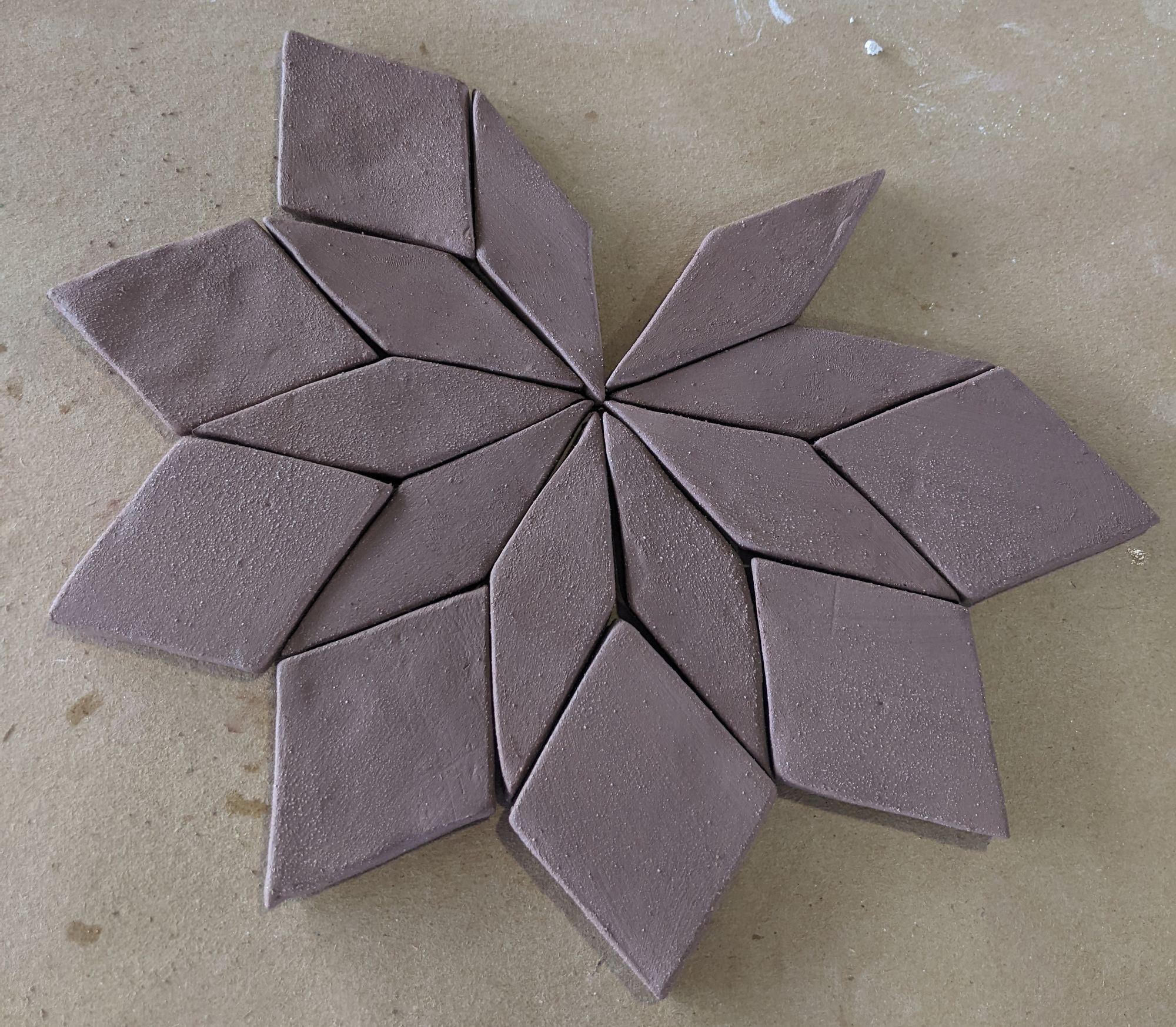
Penrose tiles are sets of geometric shapes that can be arranged to tessellate aperiodically. This is to say, as Lee wrote here recently, that the pattern does not have translational symmetry and can be extended infinitely. While Penrose tiling is a fun (and beautiful) mathematical concept, I’m interested in applying it more concretely and using the shapes to tile a decidedly finite plane: my kitchen wall.
So I started making sample ceramic Penrose tiles for a ridiculously inefficient backsplash project. Not only does the aperiodic nature of the Penrose set means I am guaranteed a future of layout headaches. I am also at best an amateur ceramicist, and have decided to design the tile surfaces parametrically, and well, I’ve never actually laid tile. This project has become a veritable grab bag of all of my learning ambitions, and with each convoluted step I eke out a bit more knowledge.
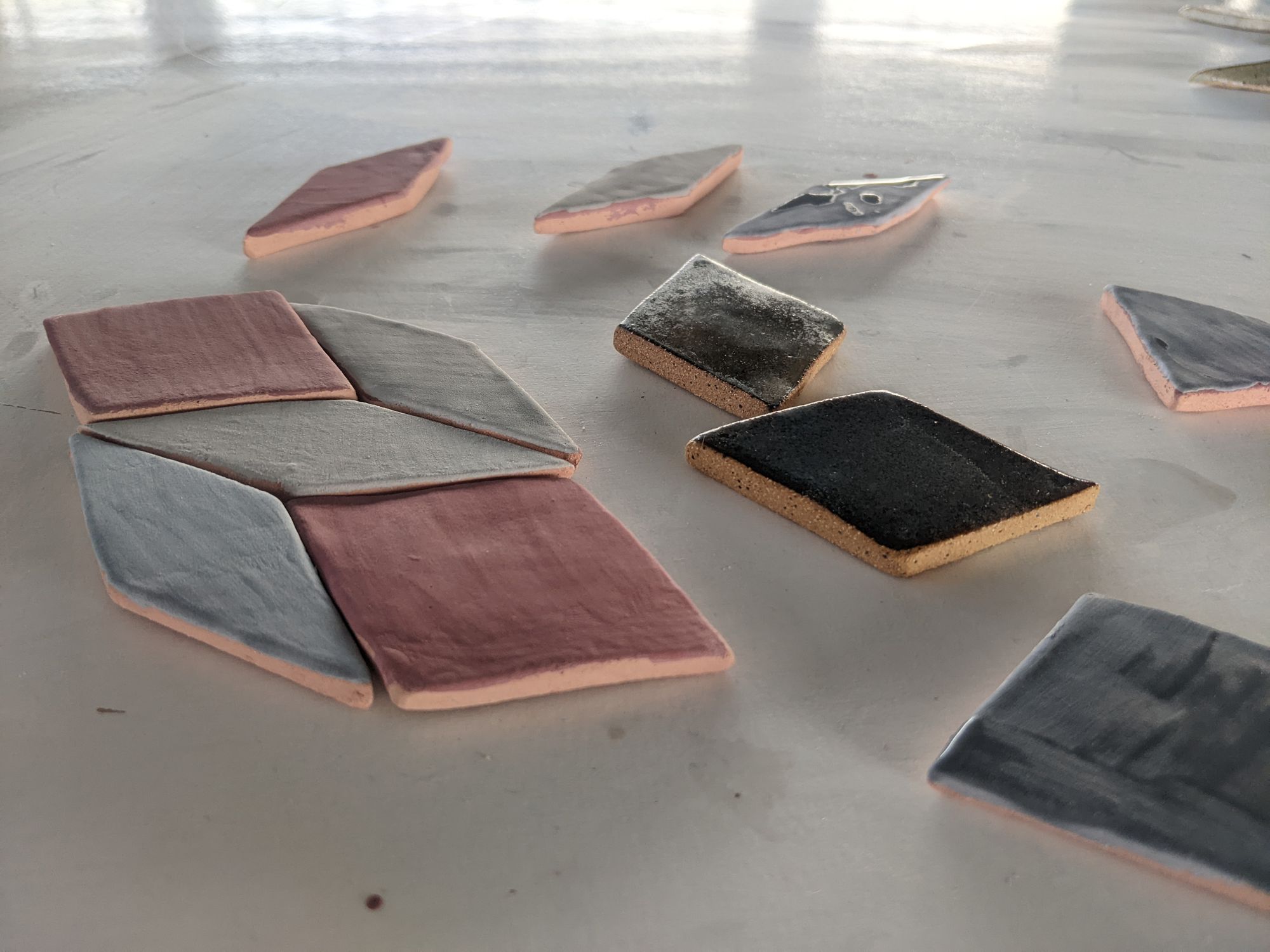
The samples I’ve made so far are crude; I roll a slab of clay and trace the tiles from laser-cut templates. I’ve been learning Grasshopper, a parametric plugin for Rhino, and for practice I’m modeling the tiles as irregular pyramids. From here, I’ll 3D print the geometry and pour a plaster mold for pressing the clay. This part I’ve at least done before, albeit 15 years ago.
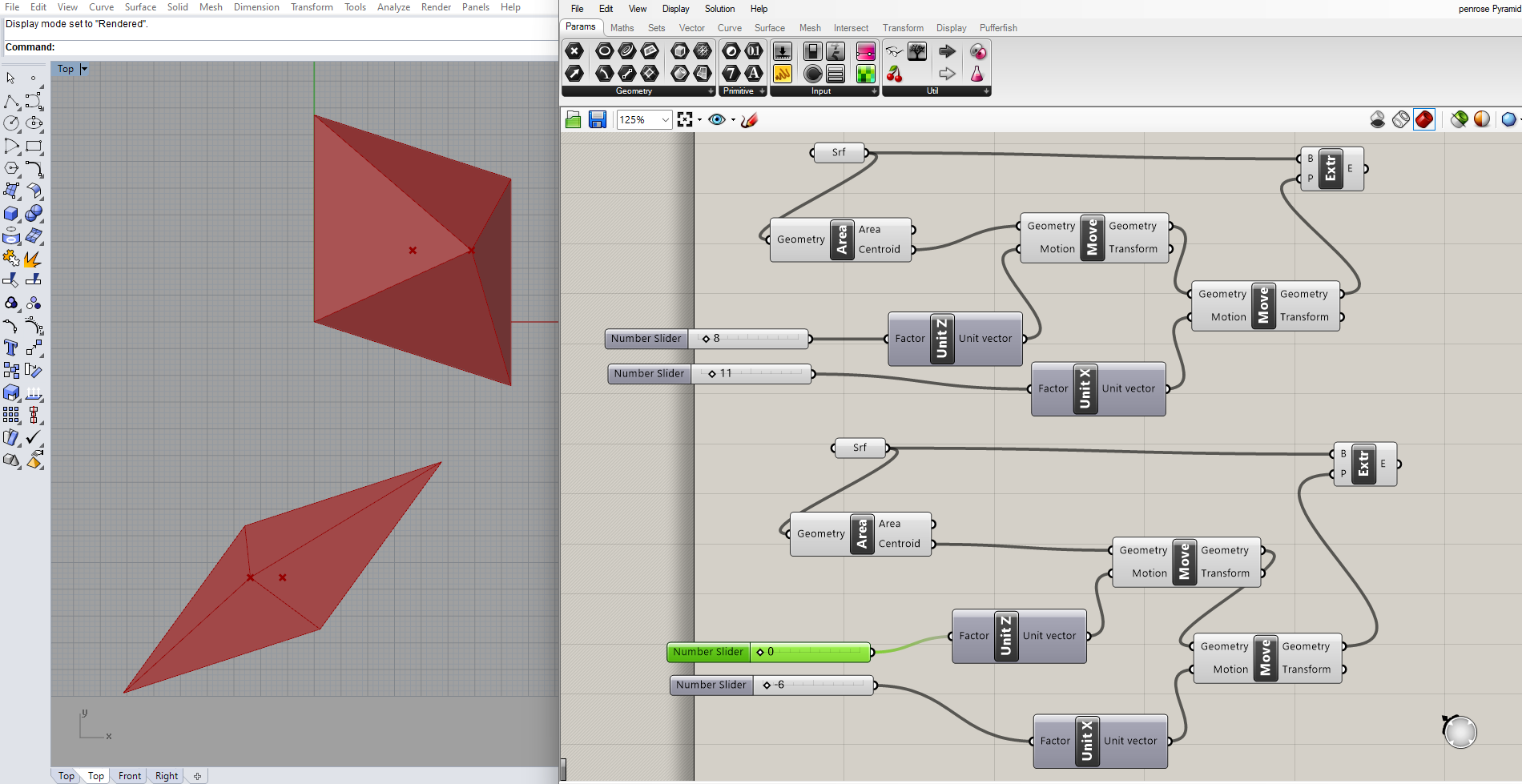
If I’m happy with the samples, I only have to figure out how to produce hundreds of them, perfect my glazing, fine tune the layout, and well, learn how to lay tile. It’s convoluted and inefficient, but I learn best by doing and with a long list of things I want to learn and only so many hours in the day, I might as well pursue all of these goals simultaneously. Best case scenario, my kitchen will display the complex geometry of Penrose tiling. Worst case scenario I’ll be better at ceramics and CAD.
MAKING & MANUFACTURING.
If I just wanted to lay rectangular tiles, this calculator (from a delightfully old school site, blocklayer.com, which has dozens of widgets for planning projects) would help me plan and budget in a pinch. Blocklayer also has tools for calculating the angles, cuts, or volumes needed for a huge swath of applications from compound miters to spiral staircases to pouring a concrete slab. Critically, you can toggle between metric and imperial units.
It’s kind of mind-boggling how much ground the site covers – scrolling through the directory, I counted over 180 tools. Even more impressive is that according to the footer it’s the project of one guy, Greg Tarrant. Beyond his site and the occasional forum post announcing a new tool, Greg doesn’t seem to have an online presence. I am incredibly impressed with his body of work – cheers to you, Greg!
MAINTENANCE, REPAIR & OPERATIONS.
Ernie Smith from Tedium wrote an interesting piece about EasySweep, a credit card skimmer detection tool that was created by Target’s security team. EasySweep is designed for retail staff to quickly assess whether their hardware has been tampered with. The design is pretty simple: an injection molded piece of plastic fits over five popular point of sale (POS) devices to ensure that no extra material has been surreptitiously installed. It’s a straightforward go/no-go test; if the geometry of the POS is out of spec, it has been tampered with and should be taken out of commission.
Target has decided to share the design with other retailers. It’s not entirely open source, but an inquiry from a corporate email account will get you access to production-ready STEP files. Ernie speculates that Target is trying to keep the design out of the hands of potential scammers, but given the EasySweep is just a piece of plastic of known dimensions I think it’s more likely the company is trying to limit their liability in case a skimmer could defeat the device. Either way, it’s nice to see some altruism around security protocols. Ernie likens Target’s decision to share the EasySweep to Volvo sharing the three point seatbelt design. He writes, “safety measures are not the kinds of things you want to build a competitive advantage on.”
Target also developed a tool to protect against digital credit card skimming, which they chose to make entirely open source.
DISTRIBUTION & LOGISTICS.
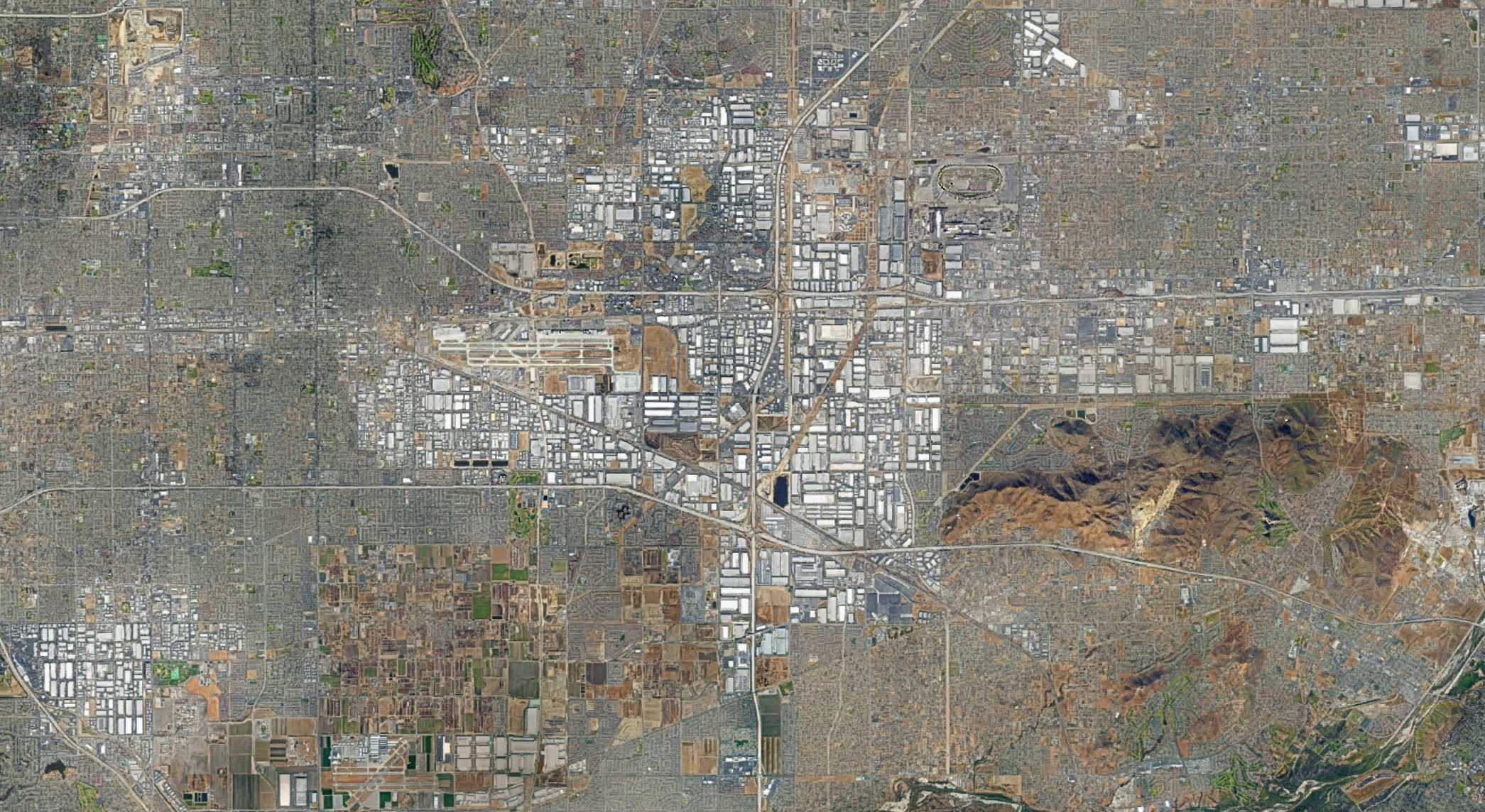
After shipping containers are unloaded at the ports of Long Beach and Los Angeles, much of the cargo makes its way 90 km northeast to California’s Inland Empire. This region, which includes San Bernardino and Riverside, is home to nearly 5 million people and roughly 4,000 warehouses. These warehouses, and their adjacent parking lots, cover about 140 square kilometers, an area larger than San Francisco. The Inland Empire has been a logistics hub since the early 2000s but “the ecommerce boom of the pandemic accelerated the land grab, and the region became ever more hardscaped.”
The growth of the logistics industry is a point of contention in the region, with economic development in constant tension with public health and environmental degradation. The sector has created tens of thousands of jobs, although the median wages are relatively low: $18.57 an hour for warehouse workers and $24.93 for truck drivers. Meanwhile, the diesel truck traffic has meant that counties in the Inland Empire have some of the worst air quality in the US. This 2022 video features a high school in Fontana, California that is flanked by warehouses, spurring community concern for students’ health; last month, the city blocked a warehouse development adjacent to another school. Communities in the Inland Empire pushed for a regional moratorium on warehouse development earlier this year, but the bill was unsuccessful.
INSPECTION, TESTING & ANALYSIS.
In her recent SOW AMA (interview hitting inboxes soon!), food engineer Larissa Zhou touched on her love of Shin Ramyun instant noodles. I am also a big fan, so I was delighted when Sam shared this student project that breaks down all of the ingredients and processes that go into a package of Shin noodles.
I hadn’t considered the many steps it takes to dehydrate noodles. A few of the processes I found surprising:
- After slicing, the noodles are steamed for several minutes to form “highly-digestible pregelatinized starch.”
- They’re then dunked into a bath of seasoning.
- To remove moisture, the noodles are flash-fried in oil, reducing the moisture content to 3-6%. I found a highly stylized video of that step here.
I also found the breakdown of the broth packet quite interesting. Shin Ramyun does not include the flavor enhancer MSG (potentially in response to xenophobic mistrust of the delicious substance). However, the additives within the product contain naturally occurring glutamic acid, which the authors explain “will form MSG once it comes in contact with the salts present in the food product. Similarly, the yeast extract also acts as a flavor enhancer by imparting umami taste and contains naturally occurring glutamates.” Glutamates mean umami, and umami makes good ramen.
The project is housed on a Wiki for an introductory food science course at the University of British Columbia, and you can find dozens of similar student projects here. They’re a lot of fun to flip through; I learned that Beyond Meat burgers use beet juice to simulate blood and that synthetic energy drinks have been around since 1927.
SCOPE CREEP.
It’s a shame I didn’t learn about the Scripps Institution of Oceanography's Floating Instrument Platform (FLIP) until it was decommissioned. It was a truly bizarre and beautiful thing:
In less than an hour, it could transition seamlessly from a horizontal barge for transit into a vertical spar platform for stationary operation. To refloat from vertical to horizontal mode, the crew would pump out the ballast tanks with compressed air, and the vessel's stern would rise back up to the surface.
If that description is too abstract, just imagine the bow of a ship sticking straight out of the water, or watch this short video of FLIP flipping. The low acoustic noise levels and very low motions of the platform made it a much beloved station that supported a wide range of research.
Thanks as always to Scope of Work’s Members and Supporters for making this newsletter possible. Thanks also to Cory, Sam, Owen for links.
Love, Hillary
p.s. - Please do share your thoughts and recommendations around nuclear energy with me – just hit reply. :D
p.p.s. - We care about inclusivity. Here’s what we’re doing about it.


